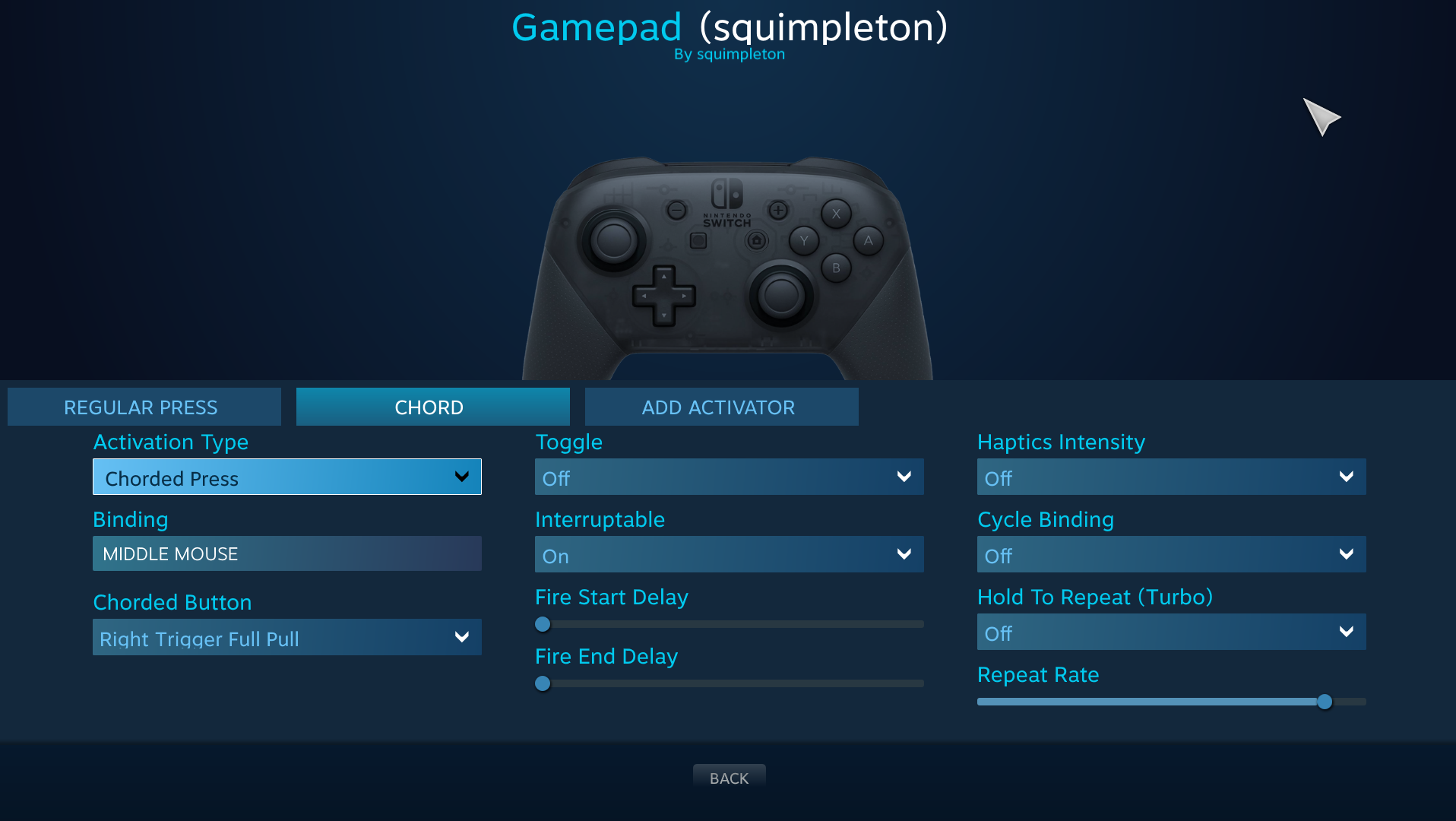

- #DOLPHIN EMULATOR NO JOYSTICK SENSITIVITY FULL#
- #DOLPHIN EMULATOR NO JOYSTICK SENSITIVITY BLUETOOTH#
This is a demanding game, and your CPU isn't strong enough to run it any faster. Both Japanese versions also have the Pokémon Celebi instead of Jirachi. Pokémon Colosseum Bonus Disc Developer(s) Genius Sonority: Publisher(s) Nintendo: Series: Pokémon: … To fix, just set the ports to None before starting the game. It seems that, no matter the Dolphin version, this is a persistent problem. Due to copyright concerns, Dolphin is unable to include official GameCube fonts, and instead uses Droid Sans. The Celebi downloader seems to work, I couldn't understand any of the menus. The Dolphin Emulator compatibility list contains all the games we tested, sorted by how well they work on the emulator.
#DOLPHIN EMULATOR NO JOYSTICK SENSITIVITY FULL#
This title allows player to capture Pokemon that couldn’t be captured in the Ruby/Sapphire games and this game also features true full 3D role playing game mode which brings Pokemon battles to life.
#DOLPHIN EMULATOR NO JOYSTICK SENSITIVITY BLUETOOTH#
I am using a bluetooth connected controller. Dolphin is a dual-core application, it's not going to use any more than two of your cores atm. However, compatibility may extend to prior revisions or compatibility gaps may exist within ranges indicated as compatible due to limited testing.

Use proper procedures to enable GCN-GBA hook-up. GameCube BIOS files need to be named "IPL.bin" in order for Dolphin to detect them, and should be 2,097,152 bytes in size. IPL files are different for PAL consoles and NTSC consoles, but American NTSC consoles use the same IPL files as Japanese NTSC consoles. Join in and help us make this the best resource for Dolphin. Giving users the ability to multiply the perceived range of their controller’s analog stick (or to “calibrate” in emulator, inputting the exact range of that particular controller’s stick) would be very, very helpful to those of us who use Nintendo-style notched-gate controllers.This is only a problem with the control stick, seeing as the directional pad works perfectly fine. (To my mind, Dolphin does it better, but either could work.)Ĭemu has simply added a “Range” setting that acts as a multiplier: at a setting of, say, 110%, when the stick is at 50% of its max range, the emulator considers it to be at 55% of its max range-and so forth.ĭolphin has (just recently) added the ability to “calibrate” analog sticks in the input mapping dialog, so that the emulator gets an exact picture of the stick’s full range and can compensate accordingly-that is, can adjust range multipliers on the fly to get full-circle movement out of any given controller’s approximation of a true circle.Ĭemu’s method is quick and dirty, whereas Dolphin’s is more precise but either would work. The practical upshot of this is that in, for example, Ni no Kuni, Oliver runs when the stick is in a notch but walks when the stick is along a straight edge of the octagonal gate.Ĭemu and Dolphin (both of which emulate Nintendo consoles and thus encountered this issue early on) account for this issue in two different ways. When moving the stick along the straight edge between two such notches, it is thus not as far from center as if it were pushed into a notch.Īs a result, the analog sticks on notched-gate controllers are not able, through most of their rotation, to reach their apogee. These controllers have an octagonal analog stick gate, with the notches (representing the farthest point the stick can reach) at the 8 orthogonal/diagonal directions. Rather, it has to do with notched analog stick gates such as are common on Nintendo controllers (such as the GameCube controller and the Classic Controller Pro). This issue doesn’t relate to any particular game.

As a result, when using these controllers (such as the GameCube controller or the Classic Controller Pro), full stick extension (such as is used to run in Ni no Kuni) is impossible in any direction but the 8 orthogonal/diagonal directions (so that full stick extension in anything but those 8 exact directions produces only a walk). For controllers that have Nintendo-style octagonal (”notched”) analog stick gates, RPCS3 expects the stick’s full range of movement to be larger than it is.


 0 kommentar(er)
0 kommentar(er)
